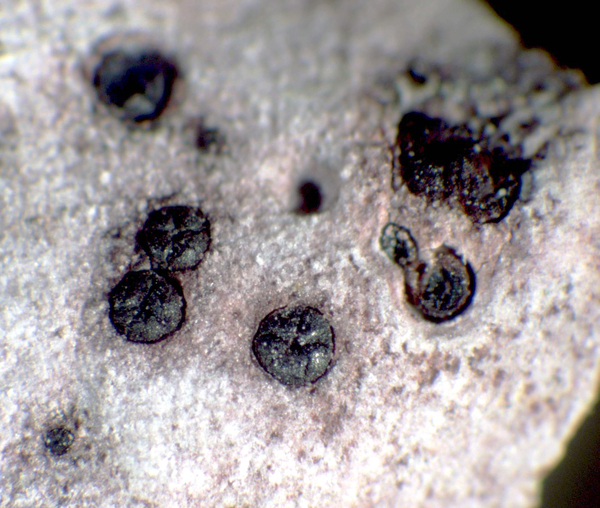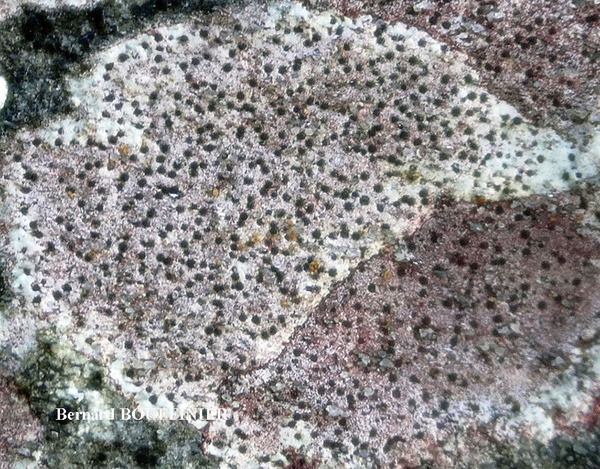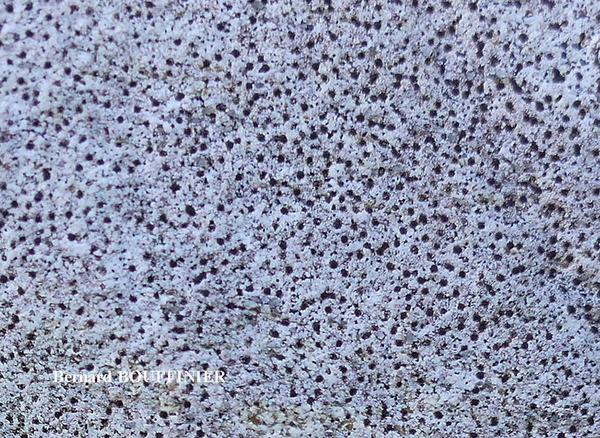Bagliettoa cazzae (Zahlbr.) Vězda & Poelt
in Poelt & Vezda, Bibl. Lichenol., 16: 363, 1981. Basionym: Verrucaria cazzae Zahlbr. - Annal. Mycol., 12: 335, 1914.
Synonyms: Protobagliettoa alocyza (Arnold) Servít; Protobagliettoa cazzae (Zahlbr.) Servít; Verrucaria cazzae var. graeca Servít; Verrucaria subrosea Servít ex Zschacke
Distribution: N - VG, Lomb. C - Umb (Genovesi & al. 2002, Ravera & al. 2006), Mol (Nimis & Tretiach 1999, Caporale & al. 2008), Laz (Nimis & Tretiach 2004), Sar. S - Camp (Aprile & al. 2003, 2003b, Nimis & Tretiach 2004, Garofalo & al. 2010, Catalano & al. 2016), Pugl, Bas (CLU 12514), Cal (CLU 7154), Si (Nimis & al. 1996b).
Description: Thallus crustose, fully endosubstratic, usually covering large surfaces, pale to bright purple-pink. Cortex (lithocortex) densely prosoplectenchymatous, of conglutinated hyphae intermingled with microcrystals, the upper part pink-violet, the lower part colourless; algal layer discontinuous, the photobiont cells in clusters; medulla prosoplectenchymatous, with macrosphaeroids especially near the base of the perithecia. Perithecia black, usually numerous, completely immersed in thallus and leaving deep pits in the rocks when they fall off, the apex slightly projecting to flattened. Involucrellum at least as large as the body of the perithecium, with radial cracks around the ostiole; exciple 0.1-0.2 mm across, the wall colourless to pale brown in upper part; hymenial gel hemiamyloid, I+ red (I+ blue at very low concentrations of I), K/I+ blue; hamathecium of periphyses in the ostiolar canal, and short periphysoids in the upper half of the perithecial cavity; paraphyses dissolving early. Asci 8-spored, two-layered, fissitunicate, with a thin tholus reacting I-, Verrucaria-type. Ascospores 1-celled, hyaline, ellipsoid, poorly developed (no mature ascospores ever observed). Photobiont chlorococcoid. Spot tests: thallus K+ dark blue-green, C-, KC-, P-. Chemistry: a pink pigment in thallus.
Note: a chiefly Mediterranean lichen of steeply inclined, hard calcareous rocks, absent from non-natural habitats; according to Roux (in litt.), contrary to B. parmigerella, this species does not grow on dolomite. The species is easily confused with B. marmorea.
Growth form: Crustose endolithic
Substrata: rocks
Photobiont: green algae other than Trentepohlia
Reproductive strategy: mainly sexual
Commonnes-rarity: (info)
Alpine belt: absent
Subalpine belt: absent
Oromediterranean belt: absent
Montane belt: absent
Submediterranean belt: very rare
Padanian area: absent
Humid submediterranean belt: rare
Humid mediterranean belt: rather rare
Dry mediterranean belt: very rare

Predictive model
Herbarium samples


P.L. Nimis; Owner: Department of Life Sciences, University of Trieste
Herbarium: TSB (32422)
2001/12/09
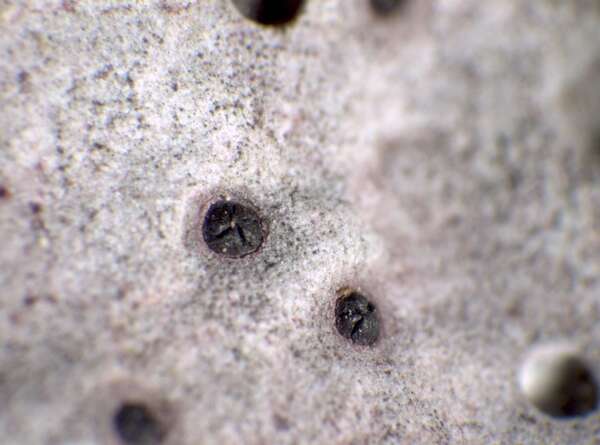

P.L. Nimis; Owner: Department of Life Sciences, University of Trieste
Herbarium: TSB (31661)
2001/12/09
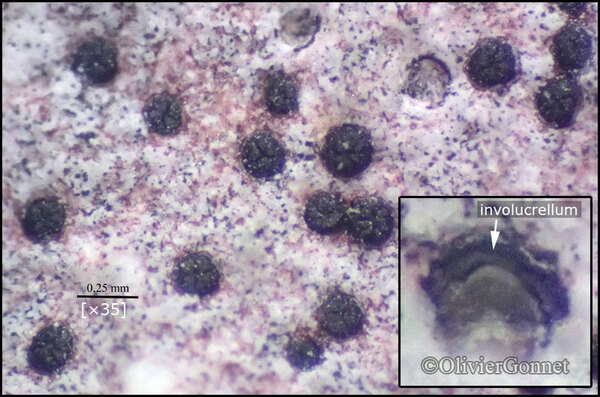
Courtesy Danièle et Olivier Gonnet - Source: https://www.afl-lichenologie.fr/Photos_AFL/Photos_AFL_B/Bagliettoa_cazzae.htm
France, Falaise de la Madeleine, 370 m - Lioux - Vaucluse
23/05/2017

Courtesy Danièle et Olivier Gonnet - Source: https://www.afl-lichenologie.fr/Photos_AFL/Photos_AFL_B/Bagliettoa_cazzae.htm
France, Falaise de la Madeleine, 370 m - Lioux - Vaucluse
23/05/2017
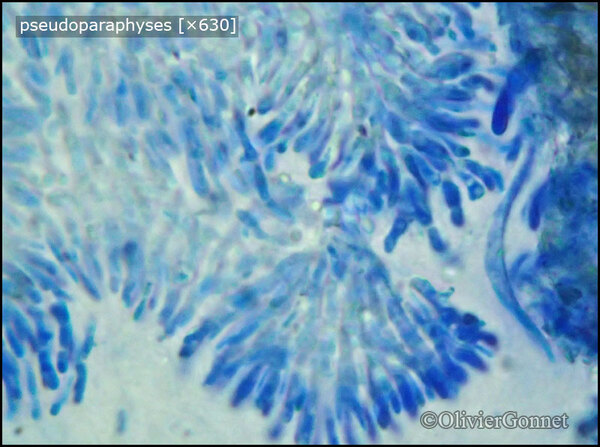
Courtesy Danièle et Olivier Gonnet - Source: https://www.afl-lichenologie.fr/Photos_AFL/Photos_AFL_B/Bagliettoa_cazzae.htm
France, Falaise de la Madeleine, 370 m - Lioux - Vaucluse
23/05/2017
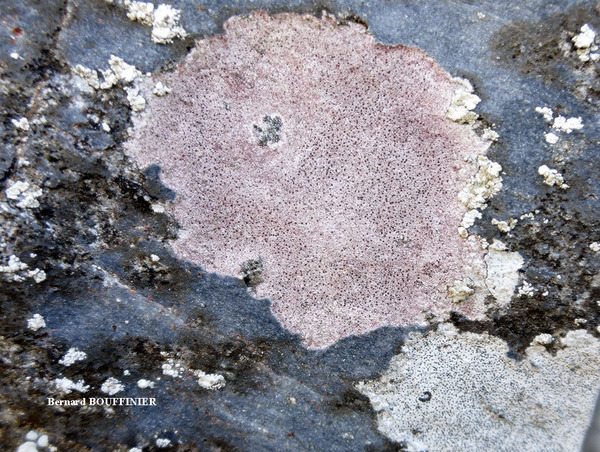
Bernard Bouffinier - Source: http://www.lichensmaritimes.org/index.php?task=fiche&lichen=904&lang=en
France, Corse, Bastia
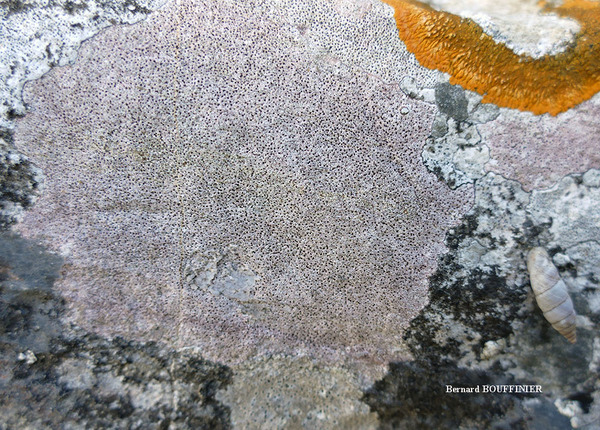
Bernard Bouffinier - Source: http://www.lichensmaritimes.org/index.php?task=fiche&lichen=904&lang=en
France, Corse, Bastia
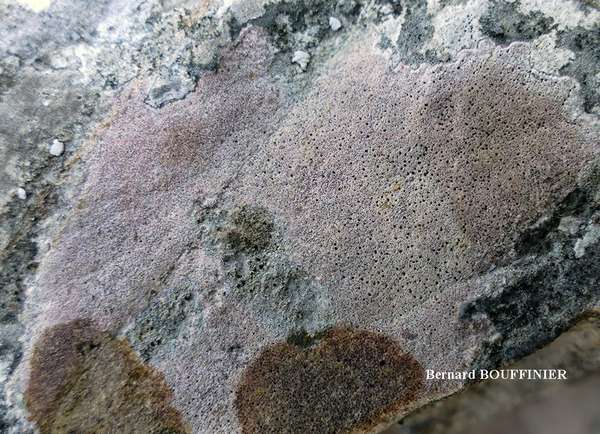
Bernard Bouffinier - Source: http://www.lichensmaritimes.org/index.php?task=fiche&lichen=904&lang=en
France, Corse, Bastia

Bernard Bouffinier - Source: http://www.lichensmaritimes.org/index.php?task=fiche&lichen=904&lang=en
France, Corse, Bastia
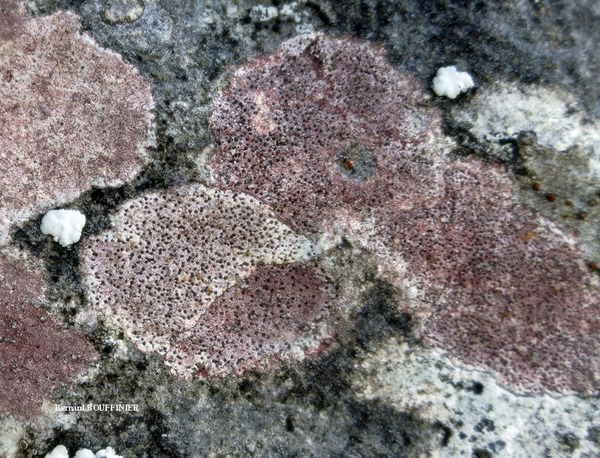
Bernard Bouffinier - Source: http://www.lichensmaritimes.org/index.php?task=fiche&lichen=904&lang=en
France, Corse, Bastia
Growth form: Crustose endolithic
Substrata: rocks
Photobiont: green algae other than Trentepohlia
Reproductive strategy: mainly sexual
Commonnes-rarity: (info)
Alpine belt: absent
Subalpine belt: absent
Oromediterranean belt: absent
Montane belt: absent
Submediterranean belt: very rare
Padanian area: absent
Humid submediterranean belt: rare
Humid mediterranean belt: rather rare
Dry mediterranean belt: very rare

Predictive model
| Herbarium samples |


P.L. Nimis; Owner: Department of Life Sciences, University of Trieste
Herbarium: TSB (32422)
2001/12/09


P.L. Nimis; Owner: Department of Life Sciences, University of Trieste
Herbarium: TSB (31661)
2001/12/09

Courtesy Danièle et Olivier Gonnet - Source: https://www.afl-lichenologie.fr/Photos_AFL/Photos_AFL_B/Bagliettoa_cazzae.htm
France, Falaise de la Madeleine, 370 m - Lioux - Vaucluse
23/05/2017

Courtesy Danièle et Olivier Gonnet - Source: https://www.afl-lichenologie.fr/Photos_AFL/Photos_AFL_B/Bagliettoa_cazzae.htm
France, Falaise de la Madeleine, 370 m - Lioux - Vaucluse
23/05/2017

Courtesy Danièle et Olivier Gonnet - Source: https://www.afl-lichenologie.fr/Photos_AFL/Photos_AFL_B/Bagliettoa_cazzae.htm
France, Falaise de la Madeleine, 370 m - Lioux - Vaucluse
23/05/2017

Bernard Bouffinier - Source: http://www.lichensmaritimes.org/index.php?task=fiche&lichen=904&lang=en
France, Corse, Bastia

Bernard Bouffinier - Source: http://www.lichensmaritimes.org/index.php?task=fiche&lichen=904&lang=en
France, Corse, Bastia

Bernard Bouffinier - Source: http://www.lichensmaritimes.org/index.php?task=fiche&lichen=904&lang=en
France, Corse, Bastia

Bernard Bouffinier - Source: http://www.lichensmaritimes.org/index.php?task=fiche&lichen=904&lang=en
France, Corse, Bastia

 INDEX FUNGORUM
INDEX FUNGORUM
 GBIF
GBIF
 DOLICHENS
DOLICHENS

